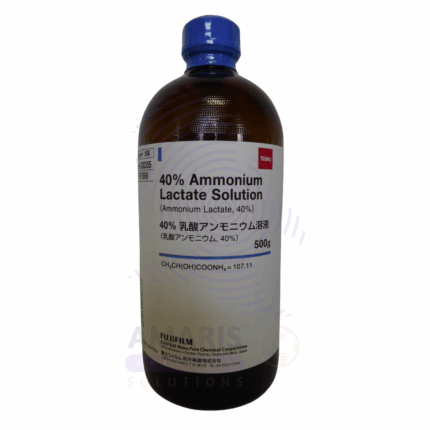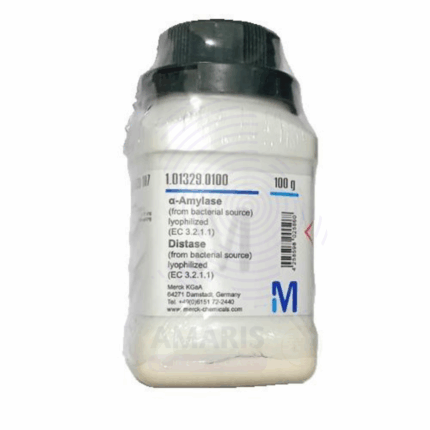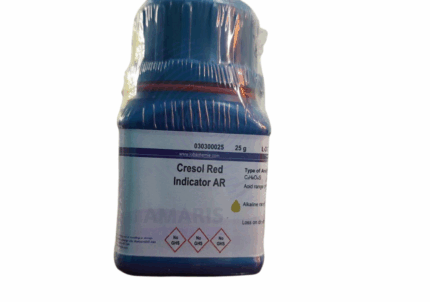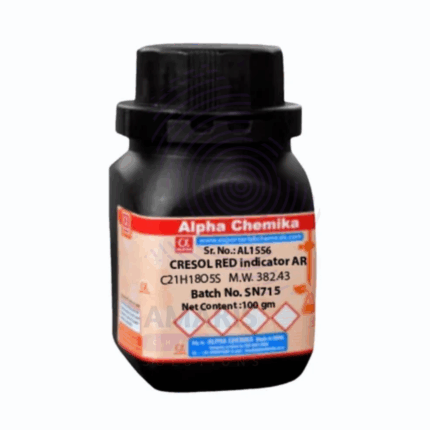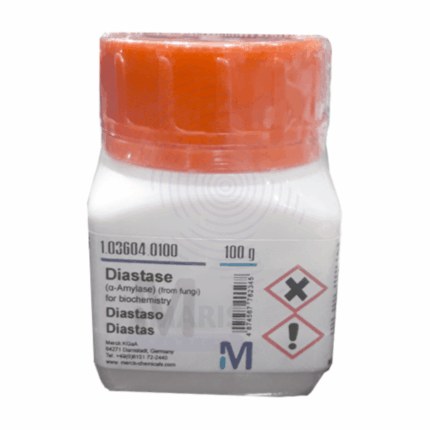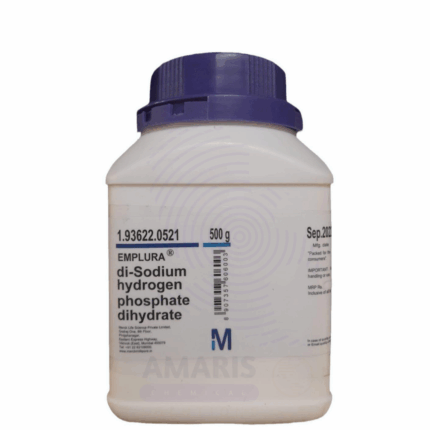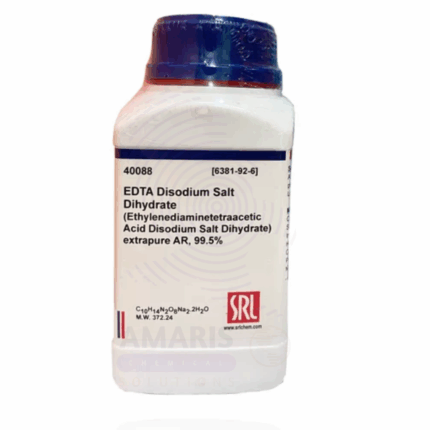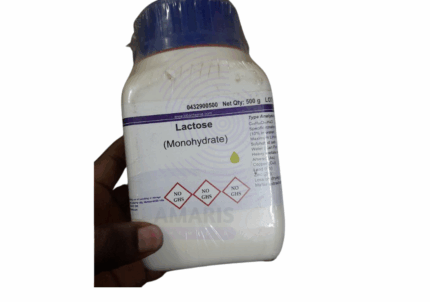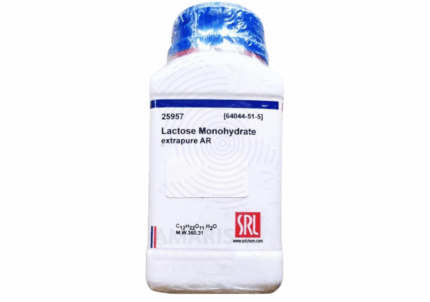

Ferulic Acid Extra Pure
$ 18.75 Original price was: $ 18.75.$ 18.67Current price is: $ 18.67.
Ferulic Acid Extra Pure is a high-grade organic compound widely valued for its potent antioxidant properties. Naturally found in the cell walls of plants such as rice, wheat, and oats, it plays a key role in protecting cells from oxidative stress by neutralizing free radicals. In laboratory and research settings, Ferulic Acid is frequently used in studies related to aging, skincare formulations, and UV protection, due to its ability to stabilize sensitive ingredients like vitamins C and E. Its high purity makes it especially suitable for pharmaceutical and cosmetic applications where consistency and efficacy are critical. This compound is also explored for its potential anti-inflammatory and antimicrobial benefits, further expanding its versatility across various scientific and industrial domains.
Ferulic Acid Extra Pure
Primary Uses
- Antioxidant research and testing:
Commonly used in studies evaluating antioxidant capacity due to its ability to scavenge free radicals and protect biomolecules from oxidative stress. - Pharmaceutical and cosmetic formulation studies:
Investigated as an active ingredient in skin-lightening, anti-aging, and photoprotective products due to its UV-absorbing and stabilizing properties. - Reference compound in HPLC and analytical chemistry:
Serves as a standard for quantifying phenolic compounds in plant extracts and food matrices.
Secondary Uses
- Food and nutraceutical research:
Explored for its potential to preserve food by inhibiting lipid peroxidation and microbial growth. - Biomedical and cellular studies:
Studied for anti-inflammatory, anticancer, neuroprotective, and cardioprotective effects in cell culture and animal models. - Polymer and material science experiments:
Used to develop biodegradable polymers and antioxidant-functionalized materials in bioengineering labs.
| PACK SIZE |
250 grams Plastic Tin |
|---|
1. Basic Identification Attributes
- Chemical Name: Ferulic Acid
- Synonyms: 4-Hydroxy-3-methoxycinnamic acid
- Chemical Formula: C₁₀H₁₀O₄
- Molecular Weight: 194.18 g/mol
- Grade: Extra Pure (Laboratory Reagent Grade)
- Appearance: White to light yellow crystalline powder
- Odor: Slight, characteristic odor
2. Physical & Chemical Properties
- Solubility: Slightly soluble in water; soluble in ethanol, DMSO, and alkaline solutions
- Melting Point: 168–173°C
- pKa: ~4.6
- Stability: Stable under normal conditions; sensitive to light and air
- Storage: Store in a cool, dry, dark place, in an airtight container
3. Safety & Hazard Attributes
- GHS Classification:
- Not classified as hazardous under typical lab use
- Hazard Statements:
- Generally considered non-toxic at lab scale
- May cause mild irritation to eyes, skin, or respiratory tract in dust form
- PPE Requirements:
- Lab coat
- Nitrile gloves
- Safety goggles
- Dust mask in case of powder handling
- First Aid Measures:
- Inhalation: Move to fresh air; seek attention if symptoms persist
- Skin Contact: Wash with soap and water
- Eye Contact: Rinse cautiously with water for several minutes
- Ingestion: Rinse mouth; seek medical attention if unwell
4. Storage & Handling Attributes
- Storage Conditions:
- Keep container tightly closed
- Protect from moisture and light
- Store at room temperature or refrigerated for longer shelf life
- Handling Notes:
- Avoid dust generation
- Minimize direct exposure to light and air
5. Regulatory & Compliance Attributes
- CAS Number: 1135-24-6
- EC Number: 214-490-0
- UN Number: Not regulated for transport
- Hazard Class: Not classified
- Packaging Group: Not applicable
6. Laboratory Applications
- Primary Uses:
- Antioxidant activity assays and phytochemical research
- Standard in HPLC and spectrophotometry
- Reference compound in cosmetic and nutraceutical testing
- Secondary Uses:
- Study of free radical scavenging and UV-protection mechanisms
- Evaluation in pharmaceutical formulations as a stabilizing agent
- Experimental additive in food and cosmetic shelf-life extension tests
SAFETY PRECAUTIONS
- Generally considered low toxicity, but lab safety practices still apply
- Avoid inhalation of fine powder and direct contact with eyes or skin
Storage:
- Store in a cool, dry place
- Protect from light, heat, and moisture
FIRST AID MEASURES
- Inhalation: Move to fresh air; seek medical attention if symptoms occur
- Skin Contact: Wash thoroughly with soap and water
- Eye Contact: Rinse with clean water for at least 15 minutes
- Ingestion: Rinse mouth; seek medical advice if needed


 Preservatives(food)
Preservatives(food) Flavor Enhancers
Flavor Enhancers Acidulants
Acidulants Sweeteners
Sweeteners Antioxidants
Antioxidants Colorants(food)
Colorants(food) Nutraceutical Ingredients (food)
Nutraceutical Ingredients (food) Nutrient Supplements
Nutrient Supplements Emulsifiers
Emulsifiers
 Collectors
Collectors Dust Suppressants
Dust Suppressants Explosives and Blasting Agents
Explosives and Blasting Agents Flocculants and Coagulants
Flocculants and Coagulants Frothers
Frothers Leaching Agents
Leaching Agents pH Modifiers
pH Modifiers Precious Metal Extraction Agents
Precious Metal Extraction Agents
 Antioxidants(plastic)
Antioxidants(plastic) Colorants (Pigments, Dyes)
Colorants (Pigments, Dyes) Fillers and Reinforcements
Fillers and Reinforcements Flame Retardants
Flame Retardants Monomers
Monomers Plasticizers
Plasticizers Polymerization Initiators
Polymerization Initiators Stabilizers (UV, Heat)
Stabilizers (UV, Heat)
 Antifoaming Agents
Antifoaming Agents Chelating Agents
Chelating Agents Coagulants and Flocculants
Coagulants and Flocculants Corrosion Inhibitors
Corrosion Inhibitors Disinfectants and Biocides
Disinfectants and Biocides Oxidizing Agents
Oxidizing Agents pH Adjusters
pH Adjusters Scale Inhibitors( water)
Scale Inhibitors( water)
 Antioxidants(cosmetic)
Antioxidants(cosmetic) Emollients
Emollients Fragrances and Essential Oils
Fragrances and Essential Oils Humectants
Humectants Preservatives
Preservatives Surfactants(cosmetic)
Surfactants(cosmetic) Thickeners
Thickeners UV Filters
UV Filters
 Fertilizers
Fertilizers Soil Conditioners
Soil Conditioners Plant Growth Regulators
Plant Growth Regulators Animal Feed Additives
Animal Feed Additives Biostimulants
Biostimulants Pesticides (Herbicides, Insecticides, Fungicides)
Pesticides (Herbicides, Insecticides, Fungicides)
 Active Pharmaceutical Ingredients (APIs)
Active Pharmaceutical Ingredients (APIs) Excipients
Excipients Solvents(pharmaceutical)
Solvents(pharmaceutical) Antibiotics
Antibiotics Antiseptics and Disinfectants
Antiseptics and Disinfectants Vaccine Adjuvants
Vaccine Adjuvants Nutraceutical Ingredients (pharmaceutical)
Nutraceutical Ingredients (pharmaceutical) Analgesics & Antipyretics
Analgesics & Antipyretics
 Analytical Reagents
Analytical Reagents Solvents(lab)
Solvents(lab) Chromatography Chemicals
Chromatography Chemicals Spectroscopy Reagents
Spectroscopy Reagents microbiology-and-cell-culture-reagents
microbiology-and-cell-culture-reagents Molecular Biology Reagents
Molecular Biology Reagents Biochemical Reagents
Biochemical Reagents Inorganic and Organic Standards
Inorganic and Organic Standards Laboratory Safety Chemicals
Laboratory Safety Chemicals Specialty Laboratory Chemicals(Special Laboratory Equipment)
Specialty Laboratory Chemicals(Special Laboratory Equipment)
 Demulsifiers
Demulsifiers Hydraulic Fracturing Fluids
Hydraulic Fracturing Fluids Scale Inhibitors(oil)
Scale Inhibitors(oil) Surfactants(oil)
Surfactants(oil) Drilling Fluids
Drilling Fluids
 Dyes and Pigments
Dyes and Pigments Bleaching Agents
Bleaching Agents Softening Agents
Softening Agents Finishing Agents
Finishing Agents Antistatic Agents
Antistatic Agents
 Admixtures
Admixtures Waterproofing Agents
Waterproofing Agents Sealants and Adhesives
Sealants and Adhesives Curing Compounds
Curing Compounds Concrete Repair Chemicals
Concrete Repair Chemicals Anti-Corrosion Coatings
Anti-Corrosion Coatings
 Surfactants(cleaning)
Surfactants(cleaning) Builders
Builders Enzymes
Enzymes Solvents (Cleaning)
Solvents (Cleaning) Fragrances
Fragrances
 Electronic Chemicals
Electronic Chemicals Catalysts
Catalysts Lubricants
Lubricants Photographic Chemicals
Photographic Chemicals Refrigerants
Refrigerants Automotive chemicals
Automotive chemicals Pyrotechnic Chemicals
Pyrotechnic Chemicals
 Biodegradable Surfactants
Biodegradable Surfactants Bio-based Solvents
Bio-based Solvents Renewable Polymers
Renewable Polymers Carbon Capture Chemicals
Carbon Capture Chemicals Wastewater Treatment Chemicals
Wastewater Treatment Chemicals
 Pigments
Pigments Solvents(paint)
Solvents(paint) Specialty Coatings
Specialty Coatings Binders/Resins
Binders/Resins Additives
Additives Driers
Driers Anti-Corrosion Agents
Anti-Corrosion Agents Functional Coatings
Functional Coatings Application-Specific Coatings
Application-Specific Coatings
 Fresh Herbs
Fresh Herbs Ground Spices
Ground Spices Whole Spices
Whole Spices Spice Blends
Spice Blends Dried Herbs
Dried Herbs
 Leavening Agents
Leavening Agents Dough Conditioners
Dough Conditioners Flour Treatments
Flour Treatments Fat Replacers
Fat Replacers Decoratives
Decoratives Preservatives(baking)
Preservatives(baking)
 Plasticizers & Softeners
Plasticizers & Softeners Reinforcing Agents
Reinforcing Agents Adhesion Promoters
Adhesion Promoters Vulcanizing Agents
Vulcanizing Agents Antidegradants
Antidegradants Blowing Agents
Blowing Agents Fillers & Extenders
Fillers & Extenders Accelerators & Retarders
Accelerators & Retarders

